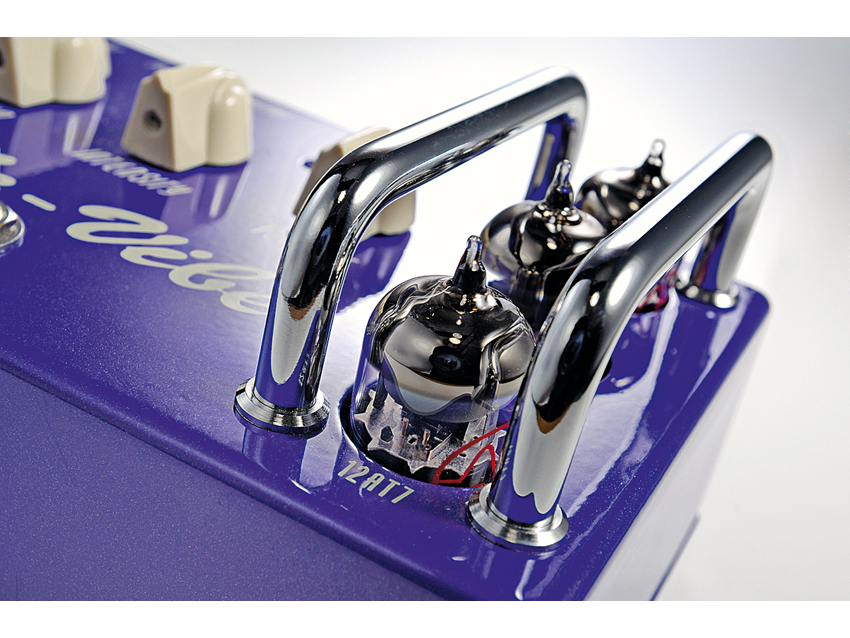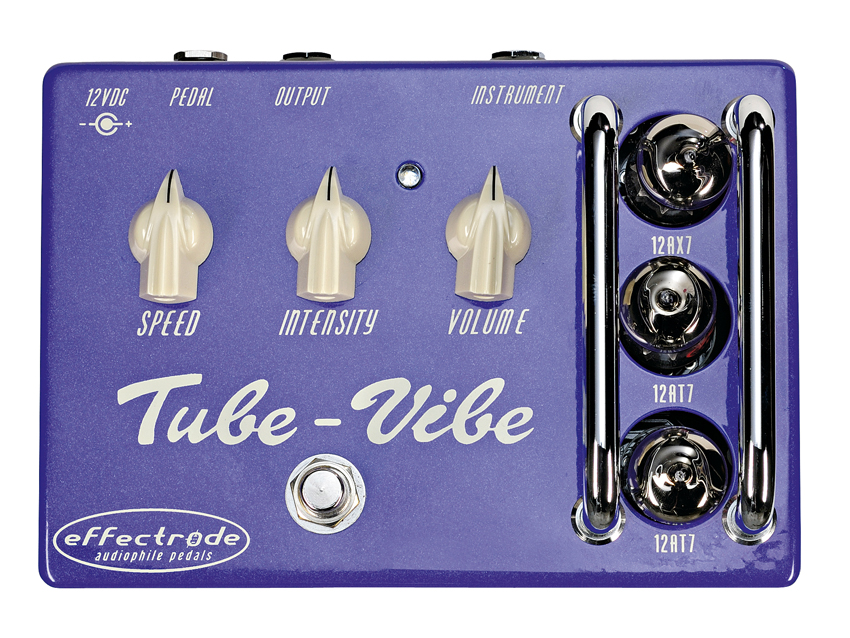MusicRadar Verdict
Effectrode´s pedals are expensive, but what price would you pay for ultimate tone? Exactly. Take a listen.
Pros
- +
Stunning sound quality. Creative approach to a familiar pedal type.
Cons
- -
Apart from the (understandable) price, nothing.
MusicRadar's got your back

Effectrode Tube-Vibe

Effectrode Tube-Vibe
Effectrode pedals are hand-assembled in small batches in Oregon, USA, although company founder and pedal designer Phil Taylor is based in Cardiff. Phil started designing stompboxes in the mid-nineties, intrigued by the feasibility of building valve modulation pedals instead of the more usual overdrive or distortion.
His rationale was that the valve-based technology behind so many classic guitar amps and pro-audio equipment could be applied to effects pedals, with the same exacting tonal requirements.
Of course, there's nothing new about valve-powered effects pedals, but most of the other valve pedals on the market (and a few multi-effects units) run the valves at very low voltages, in 'starvation' mode.
Effectrode pedals run valves at proper amp voltages. As a result, your guitar is effectively plugged into a high-quality valve preamp, and all the dynamic sensitivity of a simple guitar/amp set-up can be maintained.
The Tube-Vibe is built for demanding professional use, with a sturdy powder-coated diecast aluminium chassis, thick bars to protect the protruding valves, heavy-duty Carling footswitches and Neutrik sockets.
A DC power supply is provided as batteries aren't an option and you shouldn't risk using just any old power supply. The easy accessibility of ninepin triode valves means that you can easily alter the pedal's basic sounds: a 12AX7 can be replaced with a 12AT7 for more headroom, or you might have a treasured old Mullard you haven't yet found a use for.
Does the world need another Univibe clone? Well, perhaps not, but the Tube-Vibe isn't just another clone. While the original Univibe used transistors to create a convenient imitation of the rotating Leslie speaker for organists, the Tube-Vibe is voiced for guitar, and makes use of NOS valves - a 12AX7 and two lower-gain 12AT7s, to be precise.
There are three controls on the upper panel, all of which are self-explanatory: speed, intensity and volume. Along with the input and output, there's also a connection for use with an expression pedal.
An internal trim-pot controls the blend of dry and effected tone, replacing the simple chorus/vibrato switch of the original Univibe.
Sounds
Check out these sound clips of the Tube-Vibe in action:
The first thing we noticed was the extremely quiet switching and low noise floor. Shattering the near-silence with that first chord (inevitably something Hendrixy!) we then immediately heard the rich, warm tone of the pedal.
It's difficult to judge the validity of low-voltage valves in pedals, as it's hard to tell how much of the sonic character is coming from other circuitry; there's no such dilemma with the Tube-Vibe - this is 100 per cent valve tone!
The volume control adds enough gain for use as a solo boost. Plugging into a Class A valve amp with a clean sound on the edge of break-up dialed in, the maxed-out Tube-Vibe pushes the amp's front end into a wonderfully warm overdrive tone.
There's only one drawback: the temptation to use the pseudo-rotary effect on all of your solos, just because you can…
It can be easy to fall for some of the romantic marketing spiel regarding valve-driven effects, and we're always on our guard with such products. In this case, though, there's no question of retro gimmickry; we're talking pure valve tone here, and it's obvious as soon as you plug in.
“A synthesizer that is both easy to use and fun to play whilst maintaining a decent degree of programming depth and flexibility”: PWM Mantis review
“I feel like that song had everything we needed to come back with”: Bring Me The Horizon’s Lee Malia on Shadow Moses, its riff and the secrets behind its tone, and why it was the right anthem at the right time
“I said, ‘Are we sure we can write a song about death?’”: The story of Mike + The Mechanics' classic No.1 The Living Years









